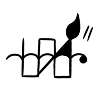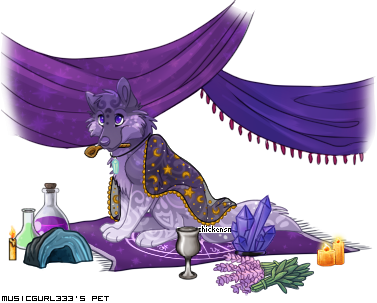One thing i have noticed about previous trading guides is that they stated values that didnt always line up with other trading guides. For example the ‘how much is this worth in c$’ thread states; a 2020 store= c$33-35 whereas horros thread states a 2020= early-mid 2010 rare which would= c$25-40 or just under c$40 if your following the early-mid bit.
So depending on which thread you go by a 2020 store would be c$33-35 or c$25-40 (obviously not taking demand into account) and while the 2nd value does overlap with the 1st value people could get quite different c$ values for the exact same pet.
As we will need to figure out a new guidance for trading would it be possible to whatever rules are decided for pet value to c$ value? I.e i have seen a lot if people considering the 3 year gap for pet value, could this somehow be figured out to apply to c$ value as well? Or whatever other options people end up trading by
I feel it would make it easier to learn trading rules if it was more standard across different types of trading but also i am nowhere near good enough at maths to actually figure out if this would make the c$ numbers far too big to be feasible. We have the opportunity now to work these thing out in tandem rather than trying to figure c$ and pet rules in isolation.
New Trading Standards Discussion (please join in!)
Re: New Trading Standards Discussion (please join in!)
Autistic & dyslexic xxxxxxxxCute Chibi art shopxxxxxxxx No coloured text please 
xxxxxxxx^Adelaide^xxxxxxxxxxxxxxxxxxxxxxxx^Naledi^xxxxxxxxxxxxxxxxxxxxxxxx^Dortchen^

xxxxxxxx^Adelaide^xxxxxxxxxxxxxxxxxxxxxxxx^Naledi^xxxxxxxxxxxxxxxxxxxxxxxx^Dortchen^
-

Screemnigcheesepuff - Posts: 5522
- Joined: Fri Nov 28, 2014 11:24 pm
- My pets
- My items
- My wishlist
- My gallery
- My scenes
- My dressups
- Trade with me
Re: New Trading Standards Discussion (please join in!)
Oh wow, so glad to wake up to such thoughtful discussion here! ^^ thank you to everyone who shared your thoughts! this is wonderful.
I agree with Solloby and others that as nice as it might be, I don’t think we’ll be able to go directly to swapping all omgsr pets 1:1. There is definitely some value discrepancy within that rarity, plus of course the existence of demand will probably always be a factor. I would love to see if any players out there end up creating guides based solely around trading omgsrs.
I disagree with the idea that the 2:1 rule - at least as far as dates go - isn’t a broken system. :0 to me, especially with this update, it makes very little sense to value pets within the same rarity tag so differently just based on the year they were released. especially because there are plenty of older pets that are simply unwanted because their designs are not as popular. there’s too many factors in this I think to just say that all older pets are more valuable no matter what.
I would have loved it if we could have moved directly to a bigger gap but I totally understand why the 3 year rule might become the more popular standard. It might be easier to move to after the 3 month rule, and it might be less nerve wracking when we’re all used to hesitating even when trading between 1 year. Even though I think anyone’s trading standards should be respected, and of course I would respect it and trade accordingly if someone stated in their rules for instance that they still use the 2:1 date rule, I would just love to see a 3 year rule become the new standard of “fairness.” It makes sense based on rarity labels, and just having a community agreement around the idea that “yeah, even if someone offers a 2019 rare for your 2017 rare, they’re not trying to rip you off and it makes sense as a fair trade because they’re within three years of each other” would improve a huge chunk of trading for a ton of people I think. and I really don’t think it’s just wanting to change something based on a whim - it really does make sense given new rarity distribution.
I do think it’s possible and even likely that players might stick with 2:1 when trading between rarities however! These new proposed math systems for rarity trading are really fascinating though and I’m so interested to see how everyone continues to discuss them. 👀 I understand the motivation to keep things simple (and probably would tend to lean towards that myself, xD) but I think it can be so good to think about these sorts of things in-depth to better sort out how we feel about different trading aspects before they settle and set in stone again
I agree with Solloby and others that as nice as it might be, I don’t think we’ll be able to go directly to swapping all omgsr pets 1:1. There is definitely some value discrepancy within that rarity, plus of course the existence of demand will probably always be a factor. I would love to see if any players out there end up creating guides based solely around trading omgsrs.
I disagree with the idea that the 2:1 rule - at least as far as dates go - isn’t a broken system. :0 to me, especially with this update, it makes very little sense to value pets within the same rarity tag so differently just based on the year they were released. especially because there are plenty of older pets that are simply unwanted because their designs are not as popular. there’s too many factors in this I think to just say that all older pets are more valuable no matter what.
I would have loved it if we could have moved directly to a bigger gap but I totally understand why the 3 year rule might become the more popular standard. It might be easier to move to after the 3 month rule, and it might be less nerve wracking when we’re all used to hesitating even when trading between 1 year. Even though I think anyone’s trading standards should be respected, and of course I would respect it and trade accordingly if someone stated in their rules for instance that they still use the 2:1 date rule, I would just love to see a 3 year rule become the new standard of “fairness.” It makes sense based on rarity labels, and just having a community agreement around the idea that “yeah, even if someone offers a 2019 rare for your 2017 rare, they’re not trying to rip you off and it makes sense as a fair trade because they’re within three years of each other” would improve a huge chunk of trading for a ton of people I think. and I really don’t think it’s just wanting to change something based on a whim - it really does make sense given new rarity distribution.
I do think it’s possible and even likely that players might stick with 2:1 when trading between rarities however! These new proposed math systems for rarity trading are really fascinating though and I’m so interested to see how everyone continues to discuss them. 👀 I understand the motivation to keep things simple (and probably would tend to lean towards that myself, xD) but I think it can be so good to think about these sorts of things in-depth to better sort out how we feel about different trading aspects before they settle and set in stone again
- Editable "Games"
~and here you are, continuing on,
despite how hard it's been~
adult || she/shey/they || my name is "fin"
calling me by my username is okay too







-

Loelya - Posts: 6943
- Joined: Sat Nov 21, 2015 1:21 pm
- My pets
- My items
- My wishlist
- My gallery
- My scenes
- My dressups
- Trade with me
Re: New Trading Standards Discussion (please join in!)
Oh man I haven't traded actively in a while, but I will say that for pure math reasons I am very in favour of banishing the 2:1 date rule to the nether realms where it belongs, especially with this new rarity granularity. Here's my reasoning.
The below is written out as explicitly as possible because hey, it's a children's website! But if you know what exponentials are, the amount of pets needed to trade up years increases exponentially as 2^x, and I firmly believe that this is silly considering the site's age.
TLDR: 2^14 is too large a number. There is absolutely no way that this ratio is representative of the real (or even the demand!) difference in rarity or value between a 2023 and a 2008 rare. I agree with Loelya's analysis that the new rarity categories are granular enough that there should be a much lower range of "real" rarity discrepancies within one category, but even if there weren't, a factor of sixteen thousand would still be far too large a factor.
Therefore, this rule was always going to be outdated after a decade and a half, and we should take this opportunity to be rid of it while we're overhauling the economy anyways.
Stay in math, kids. It helps in pet site economics.
The below is written out as explicitly as possible because hey, it's a children's website! But if you know what exponentials are, the amount of pets needed to trade up years increases exponentially as 2^x, and I firmly believe that this is silly considering the site's age.
Math time!
CS has been around for about 15 years now. Let's say that I have a rare from 2023, and want to trade for a rare from 2008. We know that these pets have the same rarity, and let's say that they also have the same demand (e.g. two rats).
So, let's look at what I have to do to get my desired 2008 rare. My first logical step is to trade for a 2022 rare. I scramble up a second 2023 rare, apply the 2:1 date rule, and trade for a 2022 rare.
Cool! I'm one step closer to my goal. So far, I have "input" two 2023 rares, and moved one year closer to my goal. Now, I want to get a 2021 rare. To do that, I need another 2022 rare, so I can apply the rule, and repeat. So I dig up two more 2023 rares, and trade for another 2022 rare. Then, I trade my two 2022 rares for a 2021 rare. So far, I have "input" four 2023 rares, and moved two years closer to my goal. Notice how that's already twice as many rares as I needed to move one year closer to my goal!
Let's do one more step, to see how bad it gets. I now want to trade for a 2020 rare. I have a 2021 rare, so to apply the 2:1 date rule I need one more. To do that, I need two more 2022 rares. To get those 2022 rares, I need another four 2023 rares. So I dig up another four 2023 rares, go through the trading process, and trade for my 2020 rare. So far, I have "input" eight 2023 rares, and moved three years closer to my goal. That's twice as many again...
Ok, let's figure out the pattern here. Every time I move up a year, I need to supply a second pet from the previous year. So the number of pets I need every time is multiplied by two. When I moved up one year, I needed 2 pets. When I moved up two years, I needed 2x2 = 2^2 = 4 pets. When I moved up three years, I needed 2x2x2 = 2^3 = 8 pets.
So how many pets will I need to move up the 14 steps between 2023 and 2008? Well, I'll need 2x2x2x2x2x 2x2x2x2x2x 2x2x2x2 = 2^14 = 16,384 2023 rares to trade for a 2008 rare!
In fact, you can work out that any x:y rule will eventually have this effect.
But it really really matters what the step size you apply the rule in is. Above, we had to multiply the number of pets needed by two every year! That made our number get very big very quickly. But what if we multiply the number of pets needed only every five years, like one of the suggested options? Well, then we only have 15/5 = 3 steps. Like we worked out above, after three steps the number of pets needed is eight. You'll have to decide for yourself whether that's reasonable.
TLDR: 2^14 is too large a number. There is absolutely no way that this ratio is representative of the real (or even the demand!) difference in rarity or value between a 2023 and a 2008 rare. I agree with Loelya's analysis that the new rarity categories are granular enough that there should be a much lower range of "real" rarity discrepancies within one category, but even if there weren't, a factor of sixteen thousand would still be far too large a factor.
Therefore, this rule was always going to be outdated after a decade and a half, and we should take this opportunity to be rid of it while we're overhauling the economy anyways.
Stay in math, kids. It helps in pet site economics.
.
.
.
.
.
.
.
XXXXXXXXXXXXX
.
.
.
.
.
.
XXXXXXXXXXXXX
███████████████████████████░█
█░█
█░█
█░█
█░█
█░█
█░█
█░█
█░█
█░█
█░█
█░█
█░█
█░█
█░█
█░█
█░█
█░█
✧・゚・✧


.


███████████████████████████░█
-

Tailish - Posts: 3712
- Joined: Sun Sep 16, 2012 9:22 pm
- My pets
- My items
- My wishlist
- My gallery
- My scenes
- My dressups
- Trade with me
Re: New Trading Standards Discussion (please join in!)
I arbitrarily decided on same rarity swap for anything Very Rare or more common for my own trades, but I also have been trying to be better about not insisting on fairness. Still not entirely sure what I'm going to do with ER and OMGSR as both feel like they require more then just a straight swap, but I could be wrong on ER and might change those to a swap too.... mainly because I'd love to see the community agree on a set of rules for everything except OMGSR and stick to it for the most part. That would make trading so much easier overall AND most of the 'list' pets are now OMGSR so it feels like this is maybe possible?
-

emgeal - Posts: 1985
- Joined: Tue Sep 16, 2008 9:12 am
- My pets
- My items
- My wishlist
- My gallery
- My scenes
- My dressups
- Trade with me
Re: New Trading Standards Discussion (please join in!)
I honestly have no issues with 2:1 between rarities (barring ER and OMGSR) unless ratio numbers say otherwise

connor 🕯️ he/any 🎄 adult
-

conarcoin - Posts: 2117
- Joined: Sat May 01, 2021 12:57 pm
- My pets
- My items
- My wishlist
- My gallery
- My scenes
- My dressups
- Trade with me
Re: New Trading Standards Discussion (please join in!)
- I don’t have much to add that would actually be helpful, but ultimately I hope the community settles on something that will make trading a lot less rigid, especially with higher-value pets. I feel like there are so many instances where you have “my side is worth 6 ‘nons’ and your side is worth 5.5 ‘nons’ so I’m cancelling the trade.” Even though at that level the .5 ‘non’ probably doesn’t matter that much. (Also really hoping we can retire the whole idea of ‘nons’, ‘MAs’, etc. - I think it makes trading way too rigid.)
And I’m saying this as a user that does have a lot of high value pets. Especially since the old rares list went away (and it did have a lot of problems), the ‘values’ of high value pets skyrocketed and, I think, made trading no fun for a lot of people.
I hope that since we have the opportunity to revamp trading values, the community settles on something that will making trading simpler and more fun for users. Not only is trading not only about higher-value pets, but no one should have to get a headache trying to figure out how to trade for a moonswirl, for example.
Hopefully something I said makes sense, lol.
-kee


─𝐁𝐑𝐎𝐓𝐇𝐄𝐑, 𝐀𝐍𝐀𝐊𝐈𝐍.─


leo | she/her | athlete
american | vegetarian

-

kee; - Posts: 44508
- Joined: Sat Oct 30, 2010 2:14 pm
- My pets
- My items
- My wishlist
- My gallery
- My scenes
- My dressups
- Trade with me
Re: New Trading Standards Discussion (please join in!)
Just wanna join in that I have made a chart of possible C$ value per rairty and year that seems to work pretty consistently with how pets have been valued? It doesn't work with the 2:1, but lets be honest if you based C$ values off of that you'll be spending 100+ for a current event rare 😅

I also made a seperate one for store pets, since they now encompasses 4 different rarities, so I feel like the rarity may hold a bigger sway now than it originally did


I also made a seperate one for store pets, since they now encompasses 4 different rarities, so I feel like the rarity may hold a bigger sway now than it originally did

Adult ▪ Female ▪ Married ▪  ▪ Christian ▪ Sept. 14th ▪ Artist
▪ Christian ▪ Sept. 14th ▪ Artist
Toyhouse ▪ DeviantArt ▪ DA Adopts ▪ CS Adopts
Completed my entire wishlist on 2/5/2024! :D
 ▪ Christian ▪ Sept. 14th ▪ Artist
▪ Christian ▪ Sept. 14th ▪ Artist Toyhouse ▪ DeviantArt ▪ DA Adopts ▪ CS Adopts
Completed my entire wishlist on 2/5/2024! :D
-

LavenderRain - Posts: 4871
- Joined: Tue Nov 01, 2016 6:30 am
- My pets
- My items
- My wishlist
- My gallery
- My scenes
- My dressups
- Trade with me
Re: New Trading Standards Discussion (please join in!)
As far as C$ values, I want to throw out there that if years are being deemphasized (as most people seem to think should be the case), then maybe a more general C$ trading guide would be better. If pets within say…3 years are considered a fair trade, then does it make sense to double C$ values between years?
Personally, I think anything more than a max of 1-3C$ for an OMGSC seems a bit unreasonable. Are there REALLY many people who trade 5+ C$ for those pets?? That seems crazy to me.
Personally, I think anything more than a max of 1-3C$ for an OMGSC seems a bit unreasonable. Are there REALLY many people who trade 5+ C$ for those pets?? That seems crazy to me.

-

musicgurl333 - Posts: 33516
- Joined: Wed Apr 18, 2012 5:38 pm
- My pets
- My items
- My wishlist
- My gallery
- My scenes
- My dressups
- Trade with me
Re: New Trading Standards Discussion (please join in!)
musicgurl333 wrote:As far as C$ values, I want to throw out there that if years are being deemphasized (as most people seem to think should be the case), then maybe a more general C$ trading guide would be better. If pets within say…3 years are considered a fair trade, then does it make sense to double C$ values between years?
I have been thinking the same thing! I have no idea personally how I'd start to value that but if someone who's good with the numbers is willing to make a chart to start off with that would be amazing! Because I personally think I'm going to start ignoring most dates. Maybe I'll play around with something and at least try lol
-

Sashtato - Posts: 5097
- Joined: Sun May 14, 2017 6:54 am
- My pets
- My items
- My wishlist
- My gallery
- My scenes
- My dressups
- Trade with me
Re: New Trading Standards Discussion (please join in!)
musicgurl333 wrote:As far as C$ values, I want to throw out there that if years are being deemphasized (as most people seem to think should be the case), then maybe a more general C$ trading guide would be better. If pets within say…3 years are considered a fair trade, then does it make sense to double C$ values between years?
Personally, I think anything more than a max of 1-3C$ for an OMGSC seems a bit unreasonable. Are there REALLY many people who trade 5+ C$ for those pets?? That seems crazy to me.
Sashtato wrote:I have been thinking the same thing! I have no idea personally how I'd start to value that but if someone who's good with the numbers is willing to make a chart to start off with that would be amazing! Because I personally think I'm going to start ignoring most dates. Maybe I'll play around with something and at least try lol
I think the chart I made actually works surprisingly well for the 3 year gap. You just take the year and rarity of the given pet, and value it somewhere in-between the 3 different values (which is how the current How Much Is This Pet Worth In C$? thread works anyways, giving a range). I'm working on making a chart of 3 year gap values like that now, but this also sparks the question, Do you value pets every 3 years starting at 2008 (2008-2010, 2011-2013, 2014-2016, 2017-2019, 2020-2023), or do you value the pet as being equal to 1-2 years before and after it?
For example, If you have a 2010 pet, do you group it with pets 2008-2010, or do you group it with pets from 2009-2011? If we're going to adopt the 3 year gap as a community, we definitely need to be very clear and on the same page of what exactly that means
I do definitely agree that my chart currently has the omgsc as way to high. The oldest omgsc we now have is from 2011, but I still can't imagine anyone paying 18C$ for it 😅
I was trying to avoid doing a bunch of fraction numbers, but I think omgsc and maybe even extremely common will have to have more
Adult ▪ Female ▪ Married ▪  ▪ Christian ▪ Sept. 14th ▪ Artist
▪ Christian ▪ Sept. 14th ▪ Artist
Toyhouse ▪ DeviantArt ▪ DA Adopts ▪ CS Adopts
Completed my entire wishlist on 2/5/2024! :D
 ▪ Christian ▪ Sept. 14th ▪ Artist
▪ Christian ▪ Sept. 14th ▪ Artist Toyhouse ▪ DeviantArt ▪ DA Adopts ▪ CS Adopts
Completed my entire wishlist on 2/5/2024! :D
-

LavenderRain - Posts: 4871
- Joined: Tue Nov 01, 2016 6:30 am
- My pets
- My items
- My wishlist
- My gallery
- My scenes
- My dressups
- Trade with me
Who is online
Users browsing this forum: alolan vulpix, Glacie Liddell, Kotoej, piplecorn, ratz, Scarlet Janefox and 9 guests






















